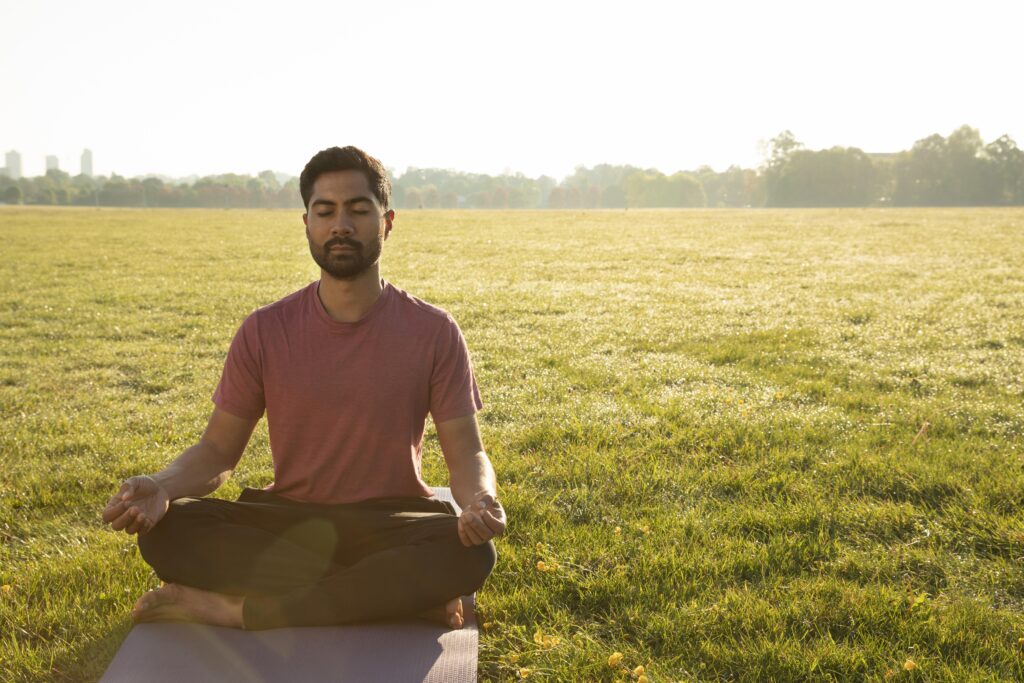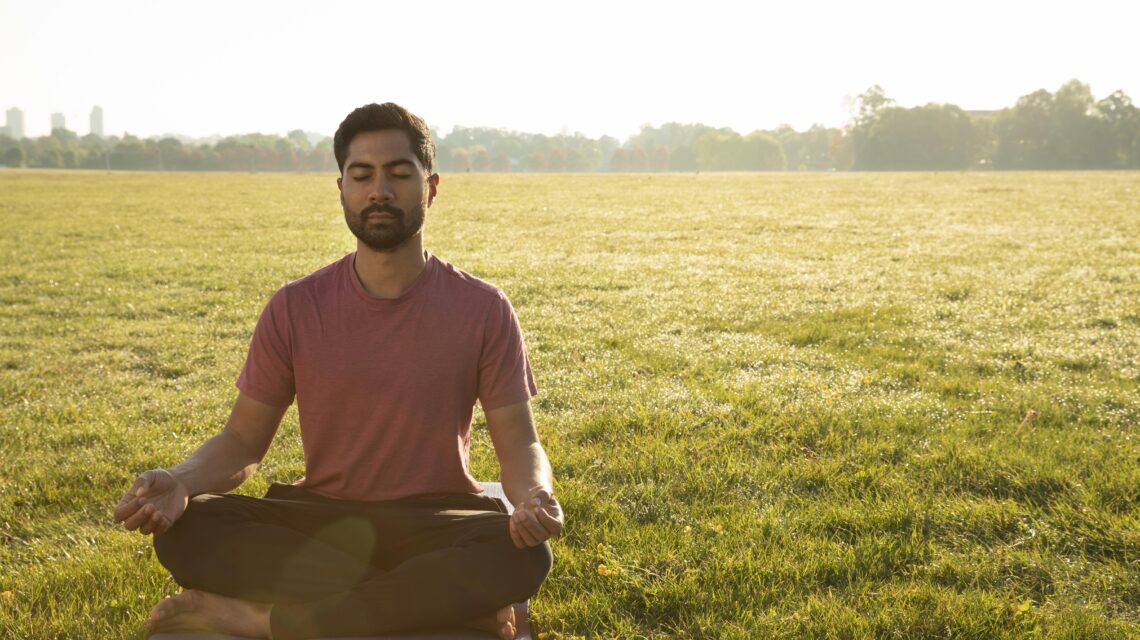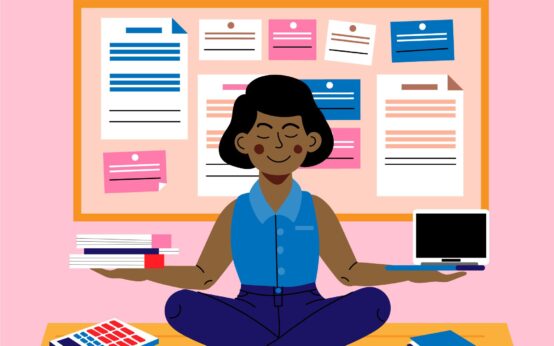Are you curious about mindfulness meditation and how it can transform your life? In today’s fast-paced world, where stress and distractions are constant companions, practicing mindfulness can often become a beacon of peace and clarity. This beginner’s guide to mindfulness meditation is designed to help you understand what it is, how it works, and how you can incorporate it into your daily routine effectively.

What is Mindfulness Meditation?
Mindfulness meditation is a practice that involves focusing your mind on the present moment. It encourages awareness without judgment, allowing you to experience your thoughts and sensations without getting caught up in them. By practicing mindfulness, you develop a heightened sense of awareness and become more connected to the here and now.
The Roots of Mindfulness Meditation
Mindfulness has deep historical roots, stretching back thousands of years to ancient spiritual traditions. Predominantly found in Buddhist practices, it encourages the cultivation of awareness and presence. However, it’s not exclusively a religious practice; many people integrate mindfulness into secular life for mental and physical well-being.
Why is Mindfulness Important?
Practicing mindfulness can lead to numerous benefits, both mentally and physically. It can reduce stress, increase concentration, and improve emotional regulation. Over time, mindfulness helps create a sense of inner calm and resilience, allowing you to navigate life’s challenges with more ease.
If you’re interested in how mindfulness supports long-term growth, explore our post on Mindfulness for Personal Growth: Slowing Down in a Fast World.
The Science Behind Mindfulness
Understanding the scientific fundamentals of mindfulness can make this practice more appealing to those who appreciate evidence-based approaches to well-being.
According to Harvard Health Publishing, studies show mindfulness may improve emotional regulation and brain function.
How Mindfulness Affects the Brain
Research has shown that mindfulness meditation can lead to significant changes in the brain. It increases the density of gray matter in areas associated with learning, memory, and emotional regulation. MRI studies have shown that regular practitioners have increased volumes in brain regions involved in emotion regulation and attention.
Mindfulness and Stress Reduction
One of the most recognized benefits of mindfulness meditation is its impact on stress. By cultivating awareness of the present moment, mindfulness helps reduce cortisol, the stress hormone. The American Psychological Association also notes that mindfulness can reduce physiological stress and promote emotional balance. This practice teaches you to respond to stressors with more balanced emotions and thoughtful decisions.
Learn practical ways to manage stress in everyday life with our guide on The Connection Between Stress and Physical Health.
Improving Focus and Attention
Mindfulness is often credited with improving focus and cognitive flexibility. When you regularly practice mindfulness meditation, it enhances your ability to concentrate on tasks and filter out distractions, leading to increased productivity and effectiveness in various spheres of life.
Beginning Your Mindfulness Meditation Practice
Starting your mindfulness journey doesn’t require you to have any special equipment or experience. All you need is a willingness to engage with the process and a bit of patience.
Setting Up a Meditation Space
Find a quiet space where you can sit comfortably without disturbances. This might be a corner of your room, a quiet garden, or even a dedicated meditation room. The key is to choose a space where you can relax and focus on your practice without interruptions.
Choosing the Right Time
While you can practice mindfulness meditation at any time, many people find it beneficial to meditate first thing in the morning or just before bed. Morning meditation sets a calm, focused tone for the day, while evening meditation helps you unwind and prepare for restful sleep.
Duration and Frequency
As a beginner, you might wish to start with just a few minutes each day and gradually increase the duration as you become more comfortable. Consistency is more important than duration. Aim to practice daily, even if it’s only for a short time.
Basic Techniques in Mindfulness Meditation
Having a basic understanding of different techniques can assist you in establishing a fulfilling practice. Here are some fundamental methods to get you started.
Breathing Meditation
One of the simplest and most effective mindfulness practices focuses on your breath. Sit in a comfortable position, close your eyes, and pay attention to your inhalation and exhalation. Notice the sensation of the air entering and leaving your body. Whenever your mind wanders, gently bring your attention back to your breath.
Body Scan
This technique involves mentally scanning your body for areas of tension or discomfort. Start from the top of your head and work your way down to your toes. Recognize and acknowledge any sensations without judgment, simply observe them, and move on.
Loving-kindness Meditation
Here, you cultivate an attitude of love and kindness towards yourself and others. Begin by focusing on yourself, then gradually extend the circle of kindness to loved ones, acquaintances, and even those with whom you have difficulties.
Mindful Walking
Take a slow, thoughtful walk, focusing on the sensation of your feet making contact with the ground. Pay attention to the rhythm of your steps and how your body feels with each stride. This practice is especially useful if sitting meditation feels difficult.

Integrating Mindfulness into Daily Life
Making mindfulness a part of your everyday routine can help deepen your practice and make it more meaningful.
Mindful Eating
Instead of rushing through meals, take the time to savor each bite. Notice the flavors, textures, and aromas. Mindful eating not only enhances your enjoyment but can also aid in better digestion and nutrition.
Mindful Communication
Listen more attentively and speak with intention. When communicating, be fully present and conscious of the interaction. This practice enhances your relationships by promoting understanding and connection.
Mindfulness at Work
Introduce short mindfulness breaks into your workday. Whether it’s a moment to focus on your breath or a brief body scan, these pauses can improve focus, reduce stress, and increase productivity.
For more workplace wellness strategies, check out Overcoming Procrastination and Staying Motivated
Challenges in Mindfulness Practice
Like any new endeavor, mindfulness meditation can come with its own set of challenges. Recognizing these hurdles can help you address them effectively.
Wandering Mind
It’s common for beginners to experience a wandering mind. When this happens, gently acknowledge it and bring your focus back to the present moment. Over time, your ability to maintain focus will improve.
Impatience and Expectations
Success in meditation requires patience. It’s normal to wonder if you’re doing it right or to expect immediate results. Remind yourself that mindfulness is a journey, not a destination. Each session is beneficial and contributes to your overall well-being.
Difficulty Finding Time
Incorporating meditation into a busy schedule can be difficult. Try to pair mindfulness practice with daily activities like showering, waiting in lines, or during your commute. Consistency is key, even if it’s only for a minute or two.

Measuring Progress and Success
Knowing how to evaluate your mindfulness practice can help maintain motivation and awareness of your journey.
Recognizing Small Changes
Mindfulness often leads to subtle changes. Notice if you become more aware of your emotions, are quicker to forgive, or find increased joy in small things. These are indicators of progress.
Journaling Your Experience
Keeping a journal of your meditation practice can be valuable. Write down your thoughts, experiences, and any changes you notice. This reflection can offer insights and reinforce your commitment.
Seeking Support and Community
Joining meditation groups or discussing your practice with others can provide encouragement and accountability. Sharing experiences with a community can lead to new insights and enhance the quality of your practice.
Recommended Resources
Engaging with additional resources can enhance your mindfulness journey by offering new techniques and perspectives.
Books on Mindfulness
- The Miracle of Mindfulness by Thich Nhat Hanh
- Wherever You Go, There You Are by Jon Kabat-Zinn
- The Mindful Way Through Depression by Mark Williams
Mindfulness Apps
- Headspace: Offers guided meditations, courses, and mindfulness exercises for users at all levels. You can learn more about Headspace and try beginner sessions directly from Headspace.com.
- Calm: Provides a variety of calming meditations and sleep stories.
- Insight Timer: Features thousands of guided meditations and allows you to time your own sessions.
Online Courses
- Mindful Schools: Offers courses aimed at both beginners and those who wish to integrate mindfulness in educational settings.
- MBSR (Mindfulness-Based Stress Reduction): Developed by Jon Kabat-Zinn, this course offers comprehensive training. Find full course details on the official UMass Memorial Center for Mindfulness website.
Creating a Sustainable Practice
To ensure that mindfulness meditation becomes a lasting part of your life, consider these strategies:
Set Clear Intentions
Before each session, decide what you want to achieve; whether it’s relaxation, increased focus, or just being present. Clear intentions guide your practice and help measure success.
Celebrate Milestones
Acknowledge and celebrate your progress, no matter how small. Whether it’s meditating daily for a week or feeling more at peace, celebrating these achievements keeps you motivated.
Revisit and Adjust
Your mindfulness practice may need adjustments over time. Regularly evaluate what works, what doesn’t, and be open to changes that enhance your meditation experience.
Incorporating mindfulness into your life can be profoundly rewarding. With dedication and patience, you’ll cultivate a more present, balanced, and fulfilling existence. Remember, the journey of mindfulness is unique to each individual, and there’s no right or wrong way to engage in this enriching practice.

 The Ultimate Guide To Sunscreen: What You Need To Know
The Ultimate Guide To Sunscreen: What You Need To Know  10 Simple Self-Care Practices For Stress Relief
10 Simple Self-Care Practices For Stress Relief  How To Create A Mindfulness Routine For Beginners
How To Create A Mindfulness Routine For Beginners  The Best Mindfulness Apps To Enhance Your Practice
The Best Mindfulness Apps To Enhance Your Practice  Easy Self Care Ideas You Can Do at Home
Easy Self Care Ideas You Can Do at Home  How To Practice Self Compassion: Tips And Techniques
How To Practice Self Compassion: Tips And Techniques  How To Create A Skincare Routine For Oily Skin
How To Create A Skincare Routine For Oily Skin  The Best Ingredients For Anti-Aging Skincare
The Best Ingredients For Anti-Aging Skincare  Skincare Myths That Are Wrecking Your Glow
Skincare Myths That Are Wrecking Your Glow  Natural Skincare 101: Everything you Need to Know
Natural Skincare 101: Everything you Need to Know  The Ultimate Guide To Sunscreen: What You Need To Know
The Ultimate Guide To Sunscreen: What You Need To Know  Guide to the Best Anti acne Products for Clear Skin
Guide to the Best Anti acne Products for Clear Skin